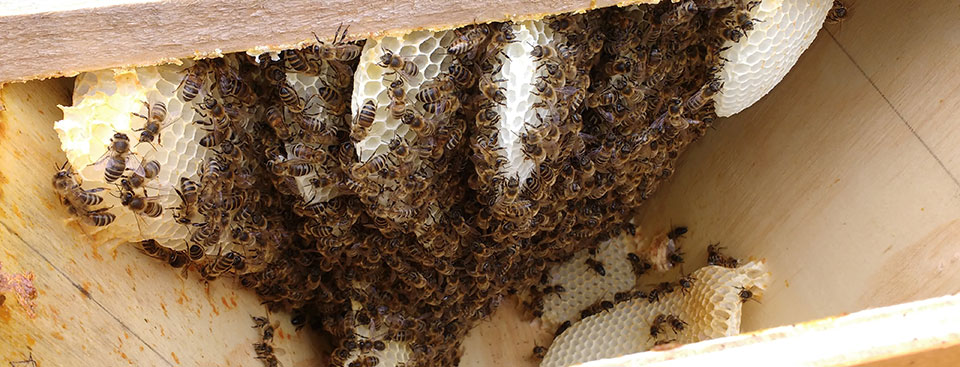

Bees are fascinating creatures with complex behaviours some of which we still don't understand. In order to keep honey bees the best way possible we need to try to understand how and why bees behave the way they do, and endeavour to allow bees to live as nature intended with minimum interference - after all bees have been around for a few more million years than we have... Take a look at the sections below for information on the honey bee and natural bee keeping, and an introduction to the other 249 species of bee we have in the UK
Back to the main bee keeping page

Bees have been around for 100 million years compared to modern humans who have been here for only 200,000 years which is nothing in comparison! All honey bees originate from Asia and Africa. Only one species (Apis melifera) then spread out over Europe (European bee)
British Black bee is Apis melifera melifera. In the UK many honey bees used by bee keepers are Italian bees (Apis melifera lingustica) or German honey bees as they are very similar to our native bee. No native honey bee in northern America
Before bees where kept in containers humans would have been ‘honey gatherers’. Tracking bees back to their nests and taking the honey. Sometimes destroying the hives but if possible leaving it intact. This practice still takes place in tropical zones
Egyptians were the first humans to keep bees for their products. Evidence dates back to 2000-3000 BC. They used long cylindrical clay pots stacked on top of each other resulting in huge stacks of 'hives'
From then until quite recently bees were kept in simple containers, like straw skeps which provided shelter for the bees but which would be difficult to extract honey from often damaging the colony or destroying it completely
Not until 1860 did the first truly successful ‘framed’ bee hive come into use – The Langstroth hive invented in USA by Reverend Langstroth. They are still very popular today.
This hive allowed bees to built wax on ‘frames’ which could be taken out for bee inspections and made it much easier to extract honey from. This type of hive allowed honey to be taken out without harming the colony
It was particularly successful as Langstroth used ‘bee space’ measurements.This measures 8mm and is the size of space that bees will happily pass each other but not too big that the bees will fill it up with wax. If this happened it would be very difficult to remove the frames that would be gummed up with wax down the sides.
The popular hive in the UK is the English National. Very similar to the Langstroth but smaller.